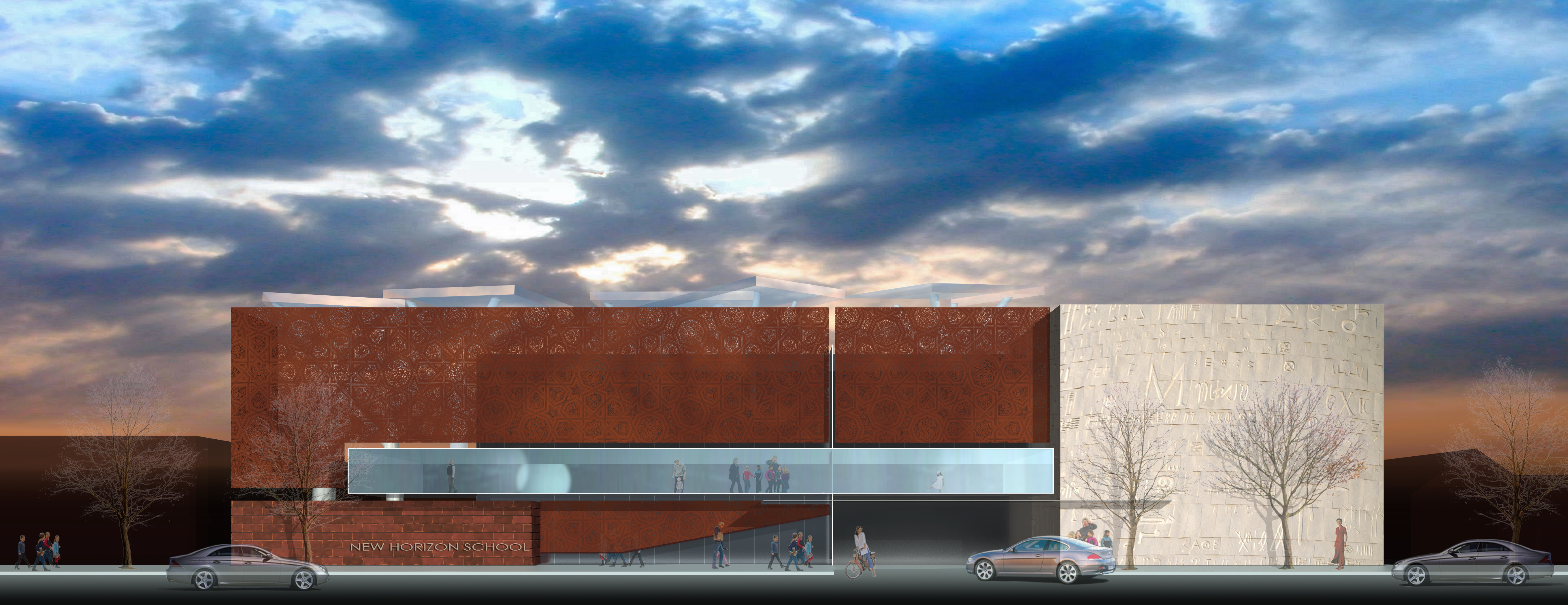new horizon school westside
The plan is organized around a central court, composed of water, natural plantings, and tree branch structures consisting of steel tree trunks and branches. They hold translucent fabric material reminiscent of clouds, sails, and leaves, providing a playful interactive visual sculpture for the court and playgrounds. They provide a constantly changing pattern of shade for the playground. Circulation ramps upward around the edges of the court, to various floors in the building.
Decoration is a major unifying factor in Islamic architecture. Interlacing designs, often accompanied by variations in color and texture, create the illusion of different planes. Through the use of reflecting and shining materials, the repetition of designs, the contrasting of textures and the manipulation of planes, Islamic decoration becomes complex, sumptuous and intricate. It is an art of repose, where tensions are resolved. This concept of art rests on a basic foundation of calligraphy, geometry, and floral and figural motifs. Spaces are defined by surface and since surface is articulated by decoration, there is an intimate connection in Islamic architecture between space and decoration. It is the variety and richness of the decoration, with its endless permutations, that characterizes the building rather than its structural elements, which are disguised.
The corten metal facade screen is a modern interpretation of a “muqarnas” which is a honeycomb decoration that can reflect and refract light. It is used to dissolve the barriers between those elements of the building that are structural (load bearing) and those that are ornamental (non-load bearing). Light is the symbol of divine unity. It functions decoratively by modifying other elements or by originating patterns. It adds a dynamic quality by extending patterns, forms and designs into the dimension of time.
Because of its role in recording the word of God, calligraphy is considered one of the most important of the Islamic arts. Most Islamic buildings have some type of surface inscription in the walls. The stone building wall would have carved calligraphy developing a pattern of shadows on the wall. The inscription might be a verse from the Qur’an, or lines of poetry.
Read more